- Sarah Jackson A Sloth'S Guide To Taking It Easy: Be More Sloth With These Fail-Safe Tips For Serious ChillingBinding : Gebundene Ausgabe, Label : Ryland, Peters & Small Ltd, Publisher : Ryland, Peters & Small Ltd, NumberOfItems : 1, medium : Gebundene Ausgabe, numberOfPages : 64, publicationDate : 2018-01-18, releaseDate : 2018-05-29, authors : Sarah Jackson, ISBN : 1911026577
- Mark King Money Made Easy 2015-16: The Complete Guide To Making And Saving Money For The Whole FamilyBinding : Taschenbuch, Label : Harriman House Ltd, Publisher : Harriman House Ltd, medium : Taschenbuch, numberOfPages : 242, publicationDate : 2015-05-13, authors : Mark King, Laura Whitcombe, languages : english, ISBN : 0857194909
- Donald Olson Frommer'S Easyguide To Seattle, Portland And The Oregon Coast (Easy Guides)Binding : Taschenbuch, Edition : Fol Pap/Ma, Label : FrommerMedia, Publisher : FrommerMedia, NumberOfItems : 1, PackageQuantity : 1, medium : Taschenbuch, numberOfPages : 256, publicationDate : 2014-09-16, authors : Donald Olson, languages : english, ISBN : 1628871202
- Staedtler Feutres de coloriage double pointe Design Journey couleurs assorties - Pochette de 36 AnthraciteCes feutres de coloriage conviennent pour les croquis, les dessins et illustrations ainsi que l'écriture et le coloriage. Feutre de coloriage double pointe.<br/><br/>Corps en polypropylène.<br/>Largeur du tracé : 0,5 -3 mm.<br/><br/>Capuchon ventilé (ISO 11540). - Offre exclusivement réservée aux professionnels
- Sycomore CRE6012 - Coloriage Enfant - Coloriages Villes 40 Pages - 3+ Ans SYCOMORE
- Coloriages Dorés Sirènes : Tableaux À Détacher Et À Offrir !Binding : Taschenbuch, Label : Deux Coqs d'or, Publisher : Deux Coqs d'or, medium : Taschenbuch, publicationDate : 2018-01-24, ISBN : 2016276738
- Bic Visacolor XL Feutres de Coloriage à Pointe Large - Couleurs Assorties, Etui Carton de 12 - Lot de 2La gamme BIC Kids propose des outils de coloriage spécialement conçus pour développer la psycho-motricité des enfants tout en leur offrant un confort optimal.<br/>Le coloriage permet l'apprentissage des couleurs et développe la créativité des enfants et leur confiance en eux.<br/>Déclinés en 24 couleurs très vives, les feutres à pointe large Visacolor XL de BIC Kids sont recommandés dès 3 ans.<br/>Leur corps rond est facile à saisir, et leur pointe bloquée ne s'enfonce pas à la pression sur le papier.<br/>Ils permettent ainsi de colorier des larges aplats et de dessiner des contours épais.<br/>Pas de panique en cas de petite bêtise, leur encre à base d'eau est lavable sur la plupart des tissus.<br/>Gage de qualité, ces feutres sont fabriqués dans les propres usines de l'entreprise BIC avec un savoir-faire unique.<br/>Coloriez en toute tranquilité.<br/>Produit éco-responsable :<br/>Recyclé à 54%<br/>NF Environnement - Offre exclusivement réservée aux professionnels
- Staedtler Set 72 Feutres de coloriage double pointe fine 0,5 à 0,8mm et large 3mm, à base d'eau, assortisFeutres Design Journey<br/>Feutres double pointe.<br/>Pour de multiples applications : croquis, dessins, illustrations, écriture et coloriage, ...<br/>Encre à base d'eau et colorants alimentaires, lavable sur la plupart des textiles.<br/>Largeur de trait : pointe large 3 mm et pointe fine 0,5 à 0,8 mm.<br/>Conforme à la norme EN 71.<br/>Set en plastique rigide transparent pegboardable.<br/>Set de 72 feutres - Offre exclusivement réservée aux professionnels
- Ozzé Coloriages érotiques pour adultesJe suis le livre de Coloriages érotiques pour adultes de Ozzé. Original et divertissant, je suis un excellent cadeau à offrir à ses amis, par exemple pour un EVJF ou un EVJG ! Être adulte ne signifie pas ne plus être joueur ou joueuse...Je cache de nombreux coloriages au fil de mes pages, tous plus coquins les uns que les autres. Concentrez-vous pour colorier sans dépasser les lignes... Y arriverez-vous Dans tous les cas, vous passerez un bon moment !
- Maped Kit de coloriage COLOR'PEPS, 100 piècesEn carton avec poignée de transport,<br/><br/>contenu : 36 feutres de coloriage COLOR'PEPS, 36 crayons de<br/><br/>couleur COLOR'PEPS STRONG, 24 crayons de cire COLOR'PEPS, 1<br/><br/>feutre, de coloriage avec pointe pinceau, 1 crayon à papier<br/><br/>(M907003)<br/><br/>BLACK'PEPS, 1 gomme, 1 taille-crayons - Offre exclusivement réservée aux professionnels
- Staedtler Feutre de coloriage double pointe Noris,étui de 10 - Lot de 4Largeur de tracé: 1,0 et 3,0 mm, encre à base<br/><br/>d'eau et de colorants alimentaires, DRY-SAFE, pointes<br/><br/>blocables, lavable, capuchon ventilé, pointe ronde<br/><br/>contenu: 10 pièces<br/><br/><br/><br/>assortis dans les couleurs jaune, orange, rouge, violet,<br/><br/>bleu, bleu clair, vert, vert clair, marron, noir - Offre exclusivement réservée aux professionnels
- Staedtler Pochette de 10 feutres de coloriage double pointe de 2 couleurs et de 2 pointes différentes. - Lot de 3Feutre double pointe<br/>Etui de 10 feutres pegboardable en carton, composé à 80 % minimum de matériaux recyclés.<br/>Feutres de coloriage double pointe moyenne 1,0 mm et large 3,0 mm de 2 couleurs différentes soit 20 couleurs.<br/>Pointe bloquée solide et résistante à la pression.<br/>Encre à base d'eau et de colorants alimentaires, lavable sur la plupart des textiles.<br/>Produit éco-responsable :<br/>Recyclé à 80% - Offre exclusivement réservée aux professionnels
- Bic Plastidecor Craies de Coloriage - Couleurs Assorties, Etui Carton de 12 - Lot de 5 LilasÀ la maison ou à l'école, les craies de couleur BIC Kids Plastidecor sont parfaites pour initier les enfants dès 30 mois au monde du dessin et du coloriage.<br/>Leur palette de 24 couleurs comprend des couleurs vives et métalliques pour stimuler la créativité des artistes en herbe.<br/>Adaptées aux petites mains, elles ont une taille de 12 cm (alors qu'un crayon standard mesure 17cm).<br/>Leur corps en cire plastique est extra résistant et leur mine plus solide que celle des crayons de couleur normaux, afin de mieux résister aux chutes et à la forte pression des petites mains sur le papier.<br/>Aucun risque de se salir avec ces craies qui laissent les mains et les tissus propres.<br/>Elles se taillent avec un taille-crayon classique, sans en obstruer les trous.<br/>L'entreprise BIC fabrique depuis plus de 65 ans des produits de grande qualité, distribués partout dans le monde et vendus au meilleur prix.<br/>Avec sa gamme BIC Kids, BIC propose des instruments de coloriage spécialement conçus pour le développement et le confort des enfants. - Offre exclusivement réservée aux professionnels
- Pelikan Feutre de coloriage colorella, aquarellable, étui 6 - Lot de 3 BlancS'applique et se mélange au pinceau et à l'eau, lavable sur<br/><br/>la plupart des tissus, capuchon ventilé, pointe ogive,<br/><br/>largeur du tracé: env.<br/>2,0 à 43,0 mm<br/><br/>contenu : 6 feutres - Offre exclusivement réservée aux professionnels
- Bic Visa Feutres de Coloriage à Pointe Fine - Couleurs Assorties, Classpack de 288 Bleu clairLa gamme BIC Kids propose des produits de coloriage spécialement adaptés au développement, au confort et à la créativité des enfants.<br/>Les feutres de coloriage Visa ont une pointe fine qui permet d'effectuer des contours nets et des coloriages précis.<br/>Pas de panique en cas de petite bêtise, leur encre à base d'eau est lavable sur la plupart des vêtements.<br/>Ils se referment facilement grâce à un capuchon ventilé.<br/>Mais ils peuvent aussi sortir sans leur capuchon car leur encre spéciale ne sèchera pas même s'ils sont décapuchonnés pendant 3 mois (sauf l'encre noire).<br/>Gage de qualité, ces feutres sont fabriqués dans les usines de l'entreprise BIC avec un savoir faire unique.<br/>La couleur du feutre, comme celle du bouchon et de la mine sont très vives.<br/>Avec BIC, dessinez dans la bonne humeur. - Offre exclusivement réservée aux professionnels
- Bic Ecriture Visaquarelle Feutres de Coloriage avec Pointe Pinceau - Couleurs Assorties, Pot de 48 TurquoiseFeutres Pinceaux Visaquarelle<br/>Feutres pointe extra souple indéformable et bloquée.<br/>Peut rester ouvert 4 semaines sans sécher ! Couleurs assorties.<br/>Pot de 48 - Offre exclusivement réservée aux professionnels
- Bic Kid Couleur Feutres de Coloriage à Pointe Moyenne - Couleurs Assorties, Classpack de 144La gamme BIC Kids propose des instruments de coloriage spécialement conçus pour le développement, le confort et la sécurité des enfants.<br/>Parfaits pour le coloriage quotidien des enfants dès 5 ans, les feutres Kid Couleur ont plus d'une corde à leur arc.<br/>Déclinés en 24 couleurs lumineuses, ils permettent des dessins vifs et riches en contrastes.<br/>Leur pointe moyenne bloquée ne s'enfonce pas à la pression sur le papier.<br/>Ils sont donc adaptés à une longue utilisation alternant contours précis et coloriages intensifs.<br/>Pas de panique en cas de petite bêtise, ces feutres de coloriage sont ultra lavables.<br/>Les feutres Kid Couleur sont solides et fiables : ils sont fabriqués en France dans les usines de l'entreprise BIC avec un savoir faire unique.<br/>Merci qui ?<br/>Les feutres Kid Couleur bien sûr. - Offre exclusivement réservée aux professionnels
- Bic Boîte métal de 20 feutres de coloriage pointe fine (0,8mm). Corps Noir. 10 couleurs assorties - Lot de 2 Vert clairCONTE<br/>Crayons de couleur.<br/>Boîte de 24 feutres. - Offre exclusivement réservée aux professionnels
- Bic Visaquarelle Feutres de Coloriage avec Pointe Pinceau - Couleurs Assorties, Etui Carton de 10 - Lot de 2Véritable palette d'artiste, la boîte de feutres BIC Kids Visaquarelle permet de colorier en retrouvant les sensations de la peinture.<br/>Déclinés en 10 couleurs lumineuses, les feutres possèdent une pointe pinceau extrèmement agréable à utiliser.<br/>Suivant la pression exercée, elle permet de varier l'épaisseur du trait.<br/>On peut ainsi dessiner précisement ou colorier de larges à-plats, tout en souplesse.<br/>Très résistante et bloquée, la pointe peut subir une forte pression sans se déformer.<br/>Grâce à une technologie d'encre optimisée, ils peuvent rester 3 mois décapuchonnés sans sécher (sauf encre noire).<br/>Gage de qualité, les feutres BIC Kids Visaquarelle sont fabriquésdans les propres usines BIC, grâce à un savoir-faire unique transmis depuis des décennies.<br/>L'entreprise BIC fabrique depuis plus de 65 ans des produits de grande qualité, distribués partout dans le monde et vendus au meilleur prix.<br/>Avec la gamme BIC Kids, BIC propose des instruments de coloriage spécialement conçus pour le développement et le confort des enfants. - Offre exclusivement réservée aux professionnels
- Ambiance-sticker Sticker prénom personnalisable style coloriageDes stickers prénoms pour votre déco ! Avec les stickers muraux prénoms et ce Sticker prénom personnalisable style coloriage, vous pourrez enfin décorer l'intérieur de votre maison à votre guise ! Ce sticker nom style coloriage est à la fois amusant et original, vos enfants vont adorer. Où coller c
- Bic Decoralo Feutres de Coloriage à Pointe Extra-Large - Couleurs Assorties, Classpack de 48Les feutres de coloriage BIC Kids Decoralo voient tout en grand.<br/>Avec leur très large format, ils sont parfaitement adaptés aux mains des enfants dès 3 ans.<br/>Leur pointe XXL dessine avec un trait épais bien visible et permet de colorier de larges surfaces.<br/>Ils se déclinent en 12 couleurs d'encre éclatantes pour de magnifiques dessins et une joyeuse découverte des couleurs.<br/>Pas de panique en cas d'oubli, les feutres de coloriage Décoralo ne sèchent pas et peuvent rester sans capuchon pendant 3 jours (sauf le noir).<br/>Pour découvrir le monde des couleurs en toute sérénité, leur encre à base d'eau est facilement lavable sur la plupart des tissus.<br/>La gamme BIC Kids permet aux enfants de découvrir le coloriage, activité créative et calme aux multiples bienfaits.<br/>En effet, il stimule le développement psychomoteur des enfants, sert à l'apprentissage des couleurs, développe leur confiance en eux.<br/>C'est une aussi première initiation à l'apprentissage de l'écriture.<br/>Pour télécharger de nombreux coloriages et obtenir plus d'informations, rendez-vous sur le site internet BIC Kids. - Offre exclusivement réservée aux professionnels
- Staedtler Feutre de coloriage Noris, étui de 10 - Lot de 3Largeur de tracé: 1,0 mm, rond , encre à base d'eau et de<br/><br/>colorants alimentaires, DRY-SAFE, pointe bloquée, lavable,<br/><br/>capuchon ventilé<br/><br/>contenu: 10 piéces<br/><br/><br/><br/>assortis dans les couleurs jaune, orange, rouge, rose, bleu,<br/><br/>bleu clair, vert, vert jaunâtre, brun van-Dyke, noir, violet - Offre exclusivement réservée aux professionnels
- Stabilo Feutre de coloriage Pen 68 ARTY, étui de 66Largeur de tracé: 1,0 mm, encre à base d'eau sans odeur,<br/><br/>peut rester 24 heures ouvert sans sécher, pointe ogive<br/><br/>bloquée anti-enfoncement, en étui métallique<br/><br/>contenu: 66 feutres<br/><br/>(6866-31) - Offre exclusivement réservée aux professionnels
- Staedtler Feutre de coloriage Noris, étui en carton 12 - Lot de 5Épaisseur mine: 1,0 mm, rond, facile à laver, capuchon avec<br/><br/>canal d'air, couleurs assorties<br/><br/>contenu: 12 pièces<br/><br/><br/><br/>assorti dans couleurs: jaune, rouge, magenta, bleu, bleu<br/><br/>clair, orange, vert, vert-jaune, violet, marron van-dyke,<br/><br/>gris clair, noir - Offre exclusivement réservée aux professionnels
- Staedtler Feutre de coloriage Noris, étui en carton 24 - Lot de 3Épaisseur mine: 1,0 mm, rond, facile à laver, capuchon avec<br/><br/>canal d'air, couleurs assorties<br/><br/>contenu: 24 pièces<br/><br/><br/><br/>assorti dans les couleurs jaune, jaune clair, jaune sable,<br/><br/>jaune doré, rouge, magenta, bordeau, bleu, bleu clair, bleu<br/><br/>de cobalt, turquois, orange, vert, vert-jaune, vert sève,<br/><br/>vert de terre, olive clair, vert olive, violet, violet<br/><br/>pourpre, marron, marron van-dyke, gris clair, noir - Offre exclusivement réservée aux professionnels
- Folia Feutre double de coloriage 2 en 1, étui de 10 - Lot de 3Largeur de tracé: 1 pointe de 0,5 mm et 1 de 1,0 mm, assorti<br/><br/>dans les couleurs : noir, violet, bleu, vert foncé, vert,<br/><br/>jaune, orange, rouge, rose vif, marron<br/><br/>contenu : 10 pièces - Offre exclusivement réservée aux professionnels
- Maped Creativ Kit de coloriage COLOURING KIT, 50 piècesContenu : 1x pot à crayons en carton à colorier, 16x crayons<br/><br/>de couleur COLOR'PEPS STRONG, 11x feutres COLOR'PEPS, 16x<br/><br/>crayons de cire COLOR'PEPS WAX, 6x colle pailletée COLOR'<br/><br/>PEPS, en carton, dimensions : (L)270 x (P)210 x (H)50 mm<br/><br/>(M907037) - Offre exclusivement réservée aux professionnels
In June 2019, tens of millions of Facebook users watched and shared a viral video that purported to demonstrate “16 easy tests” to determine whether certain foods and drinks were “fake” or “real.”
The video was posted on 1 June by Blossom, a digital publishing brand that creates viral content, often in the form of “listicles” — “8 ways to transform and upgrade your wardrobe,” “3 oddly satisfying stress relievers,” “4 super cool ways to use ice cube trays,” and so on. Within a few days, viewers shared the video more than 3 million times and viewed it more than 85 million times. However, it was removed from Facebook by 10 June 2019, after this fact check was originally published.
The video purported to show short clips of DIY food “experiments,” along with subtitles that add a degree of detail:
The 16 tests outlined in the video constituted a mixture of falsehoods, recycled urban myths, one or two experiments that have a grain of truth to them, and several tests that address types of adulteration that are absent from the United States and many other countries but have been reported in India and parts of the developing world. On the whole, the video served its viewers poorly as a source of reliable information about food safety and adulteration.
In a statement sent in response to the spread of the video, a spokesperson for the U.S. Food and Drug Administration (FDA) told Snopes:
Federal law requires that food is safe and properly labeled. For example, all food additives and color additives must be approved by FDA before market entry, and the labeling of food must be truthful and not misleading. We take food contamination and fraud very seriously and do take action when problems arise, especially if it appears that the adulteration was intentional. Consumers should rest assured that most of the practices illustrated in this video are not legal in the U.S. and any FDA-regulated product that violates or appears to the violate the Federal Food, Drug, and Cosmetic Act, may be subject to seizure, mandatory recall, or other enforcement action … Consumers should be able to trust that the foods they eat are safe and videos like these can undermine the confidence consumers have in the FDA’s role in maintaining the safety our food supply …
For its part, First Media, the company that operates the Blossom brand, told us via a spokesperson: “The video does not claim that all products or specific manufacturers include these materials, nor does it make any health or nutritional suggestions or recommendations. They are demonstrations of things we consider to be important for our global audience, however this content is intended only for informational purposes and as entertainment.”
We sent the video and its 16 claims to Eric Decker, head of the Department of Food Science in the University of Massachusetts at Amherst, one of the leading academic food science programs in the United States. Here is our breakdown of the 16 tests, based on Decker’s assessments and the supporting evidence provided to Snopes by First Media.
1. “Processed cheese with chemicals is difficult to melt”: FALSE
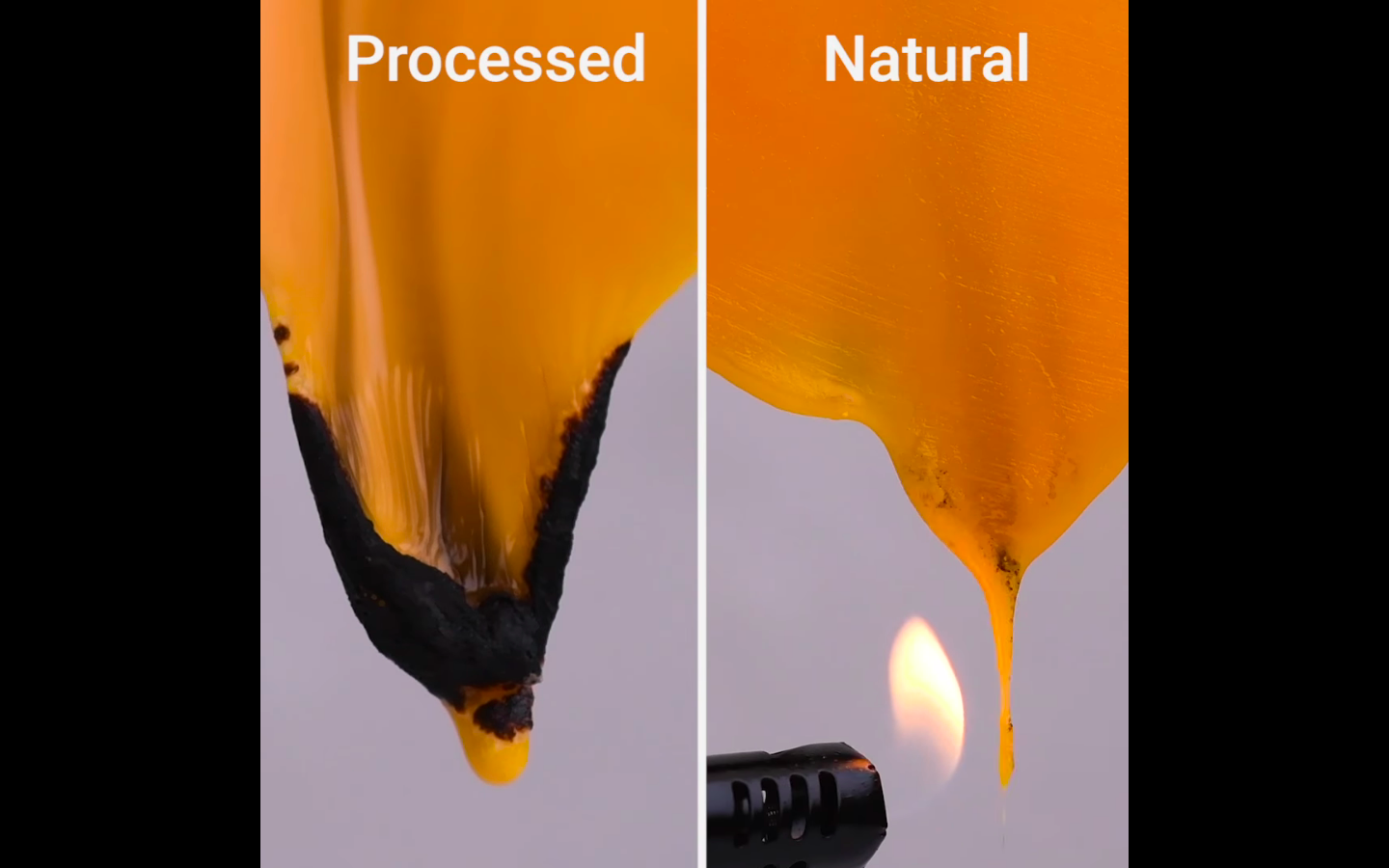
The claim that processed cheese is hard to melt is an old one, and a subject we have previously examined in detail. It first emerged in late 2014 when internet users began posting videos of themselves setting fire to slices of American cheese in an effort to prove that the cheese was “fake.”
When asked for supporting evidence, a spokesperson for First Media directed us to a 2015 Vice News article and wrote: “Processed cheese contains an added ingredient known as ‘Emulsifying Salt’ which is known to ‘help bind fats, proteins, and water in cheese.’” Interestingly, the Vice article that First Media relied on as evidence carried the headline “Stop Setting Your Cheese on Fire” and warned: “Videos purporting to demonstrate the evil stuff in processed cheese have started making the rounds online. Problem is, they don’t prove anything except how little we know about our food.”
In response to this section of the video, Decker told us:
“That’s exactly the opposite of reality … There are additives that are added to processed cheese to help the cheese melt … They take real cheese and they add what they call chelating salts and things like citric acid. That helps break the protein [casein] down. The protein in regular cheese is very aggregated together. So when you melt it, you see these clumps. If you can get those proteins to come apart, then it’s much easier to melt the cheese.” [Emphasis is added].
2. “Rice is mixed with plastic bits to increase manufacturer profit”: FALSE
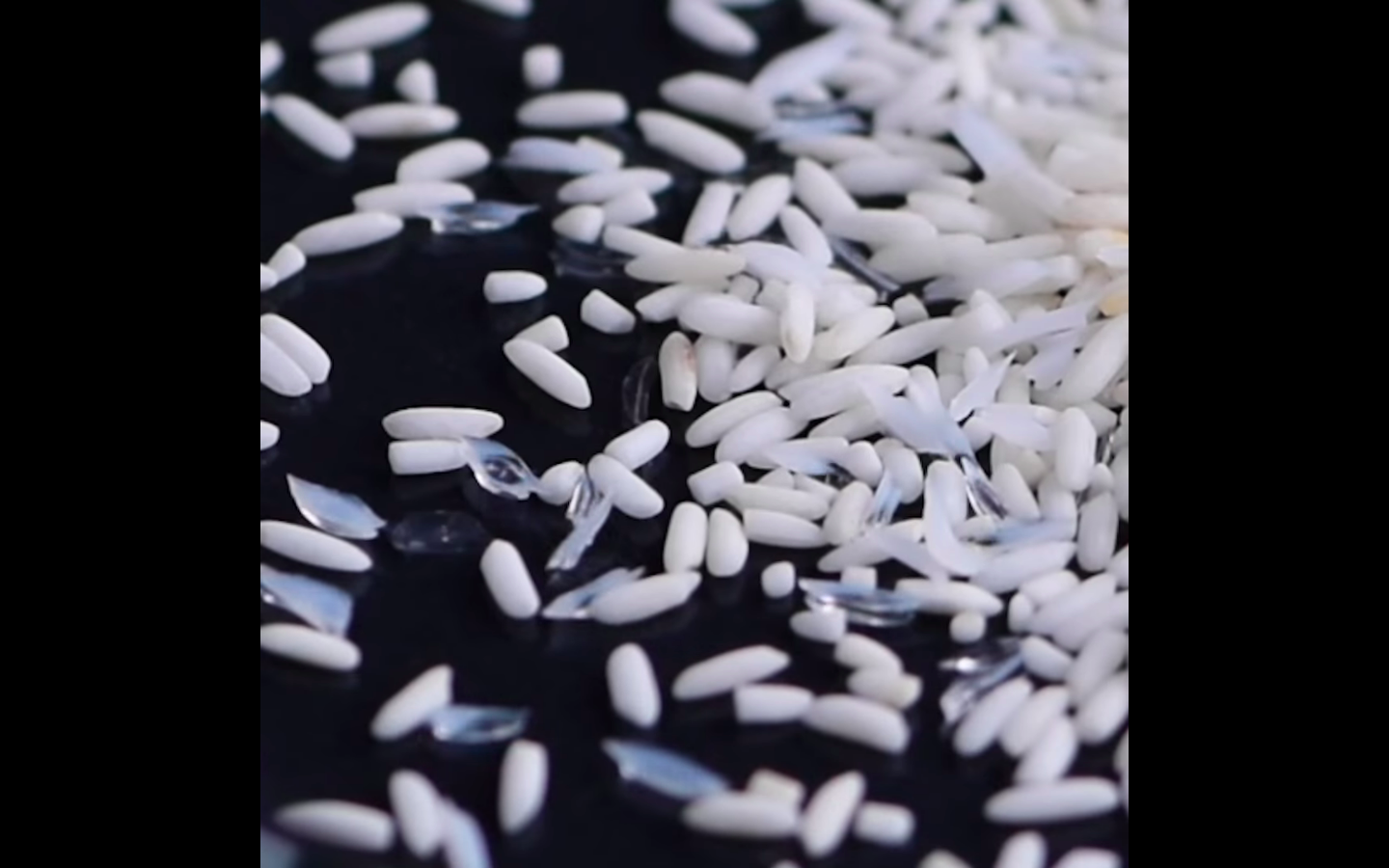
This is another canard. Every so often, for the best part of the past decade, highly questionable and thinly sourced reports have been emerging from China and other Asian countries, as well as parts of Africa, claiming widespread adulteration of rice with plastic. So far, no reliable corroboration of those claims exists, which have caused panic in some countries and have been confirmed as hoaxes.
If you add plastic to rice and then cook that mixture, you might be able to identify the plastic by its melting, turning clear, or sticking to the frying pan. But no reliable evidence exists that such rice is bought or sold anywhere in the world (not least the United States) in the first place. When asked by Snopes, First Media declined to say how and where they obtained the rice shown in the video, and whether they had added anything to the rice before filming this portion of the video.
3. ‘Baby food contains ground-up rocks advertised as fortified calcium’: UNPROVEN
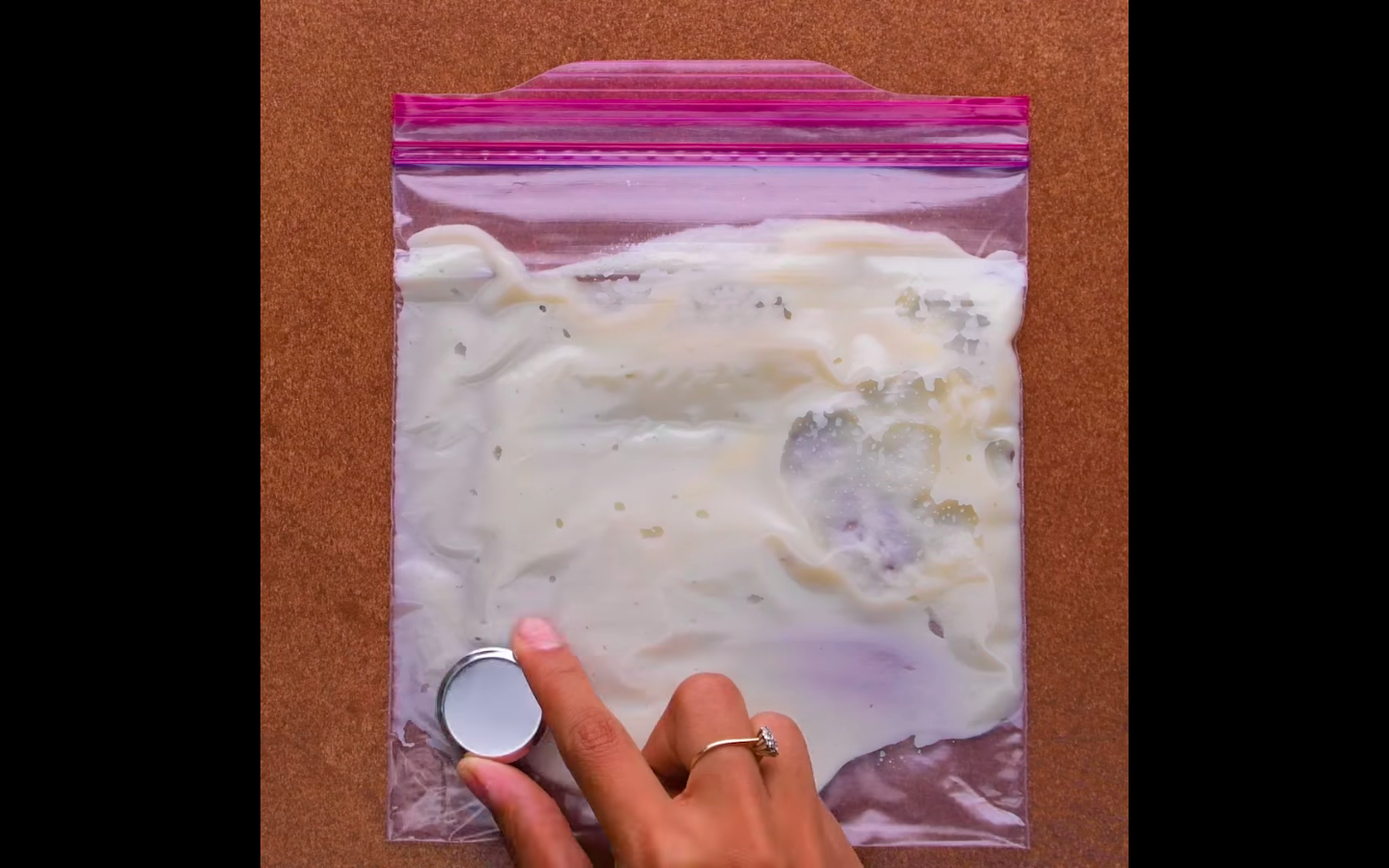
First Media told us this test was based on one included in a similar 2015 video, which can be viewed here. However, that video purportedly showed a magnet being used to locate and extract iron filings, not calcium, in baby food. We put that discrepancy to First Media, but they declined to clarify what their video actually showed, and also refused to say how and where they had obtained the baby food purportedly shown in the video or whether they had added anything to it before filming.
Either way, the video is framed in a highly misleading way, describing fortified calcium as “ground-up rocks.” Calcium, an earth metal, can be found naturally in rocks and other components of the earth’s surface, especially in limestone. On this subject, Decker told us that most supplemental calcium was ultimately derived from a rock. “That’s what’s in lime [stone]. You can get calcium that comes from oyster shells, you can get calcium that comes from all different sources.” He said the description of fortified calcium as “ground-up rocks” was “very misleading.” “The calcium they put in baby food would be no different than what they put in any food.”
4. “Synthetic supplements burn! Natural supplements won’t!”: FALSE
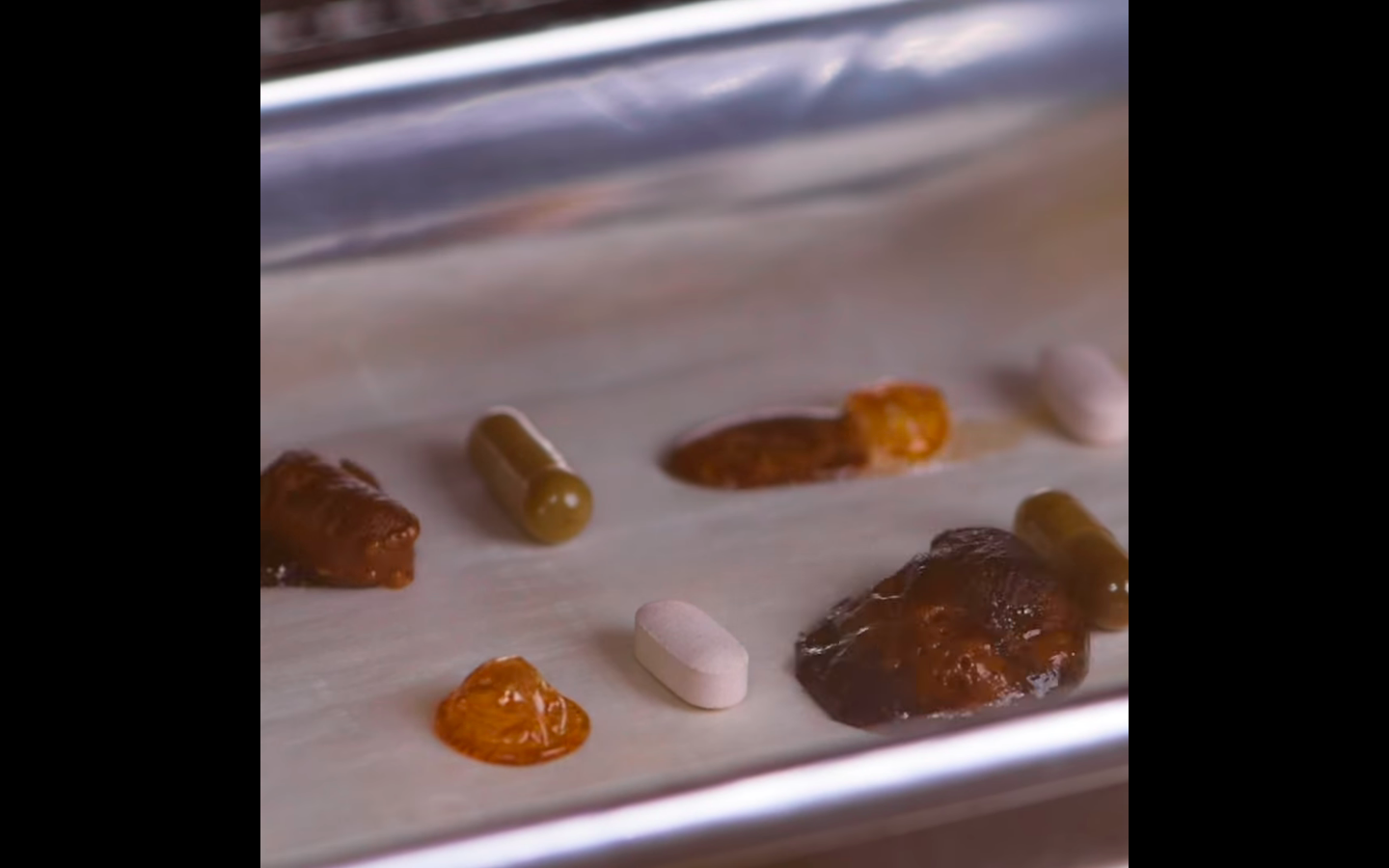
“That’s just bullshit,” Decker told us. “There’s just no basis to any of that. Most synthetic supplements are chemically identical to natural supplements.” In response to our request for supporting evidence, First Media directed us to another questionable 2015 video, which can be viewed here. That video also showed a tray of supplements — both capsules and tablets — baked in an oven. Those that burned or melted were identified as synthetic, those that did not were identified as natural. When asked by us, First Media refused to identify the supplements shown in their own video, and refused to say where and how they had obtained them.
5. ‘Glue’ in meat: MOSTLY TRUE
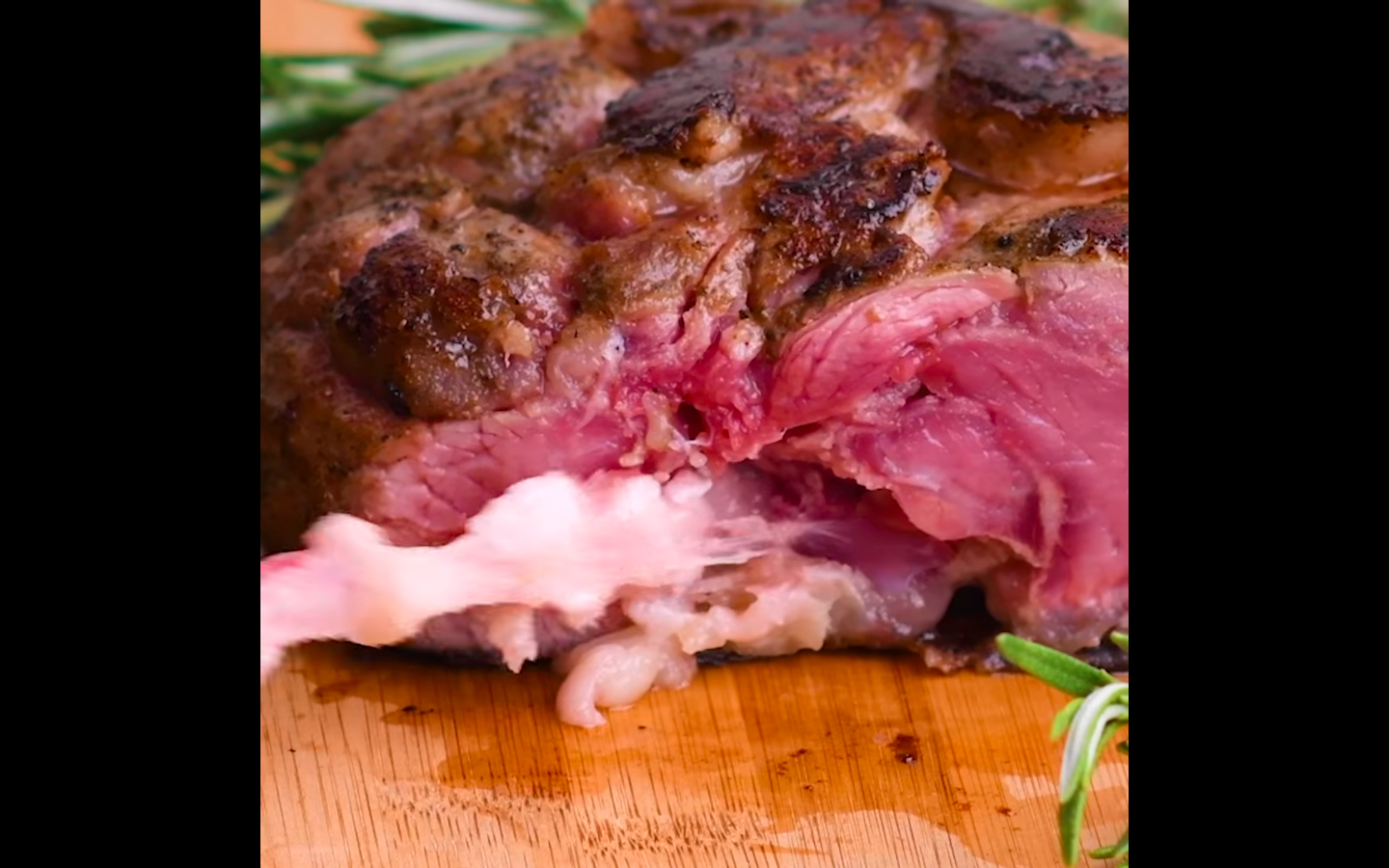
This section has to do with something called transglutaminase, which the U.S. Department of Agriculture (USDA) describes as “an enzyme approved for use as a binder to form smaller cuts of meat into a larger serving of meat. It is a natural substance derived from fermented bacteria …”
Transglutaminase is sometimes colloquially referred to as “meat glue,” but First Media’s video had the potential to cause unnecessary alarm or misinformation by describing it simply as “glue,” raising the specter of synthetic acrylic and epoxy glues being surreptitiously embedded in meat products.
We can’t verify that what is shown in the video is in fact meat glue, but we do know that transglutaminase is regarded as safe by U.S. federal authorities.
According to the USDA, “TG enzyme is a food binder that has been used in meat and poultry products for over 10 years. It was determined to be generally recognized as safe (GRAS) by the Food and Drug Administration (FDA) in 1998 for use to improve texture and cooking yields in various standardized meat and poultry products and as a protein cross-linking agent to fabricate or reform cuts of meat.”
6. Washing powder is added to ice cream “for shine and lightness”: FALSE
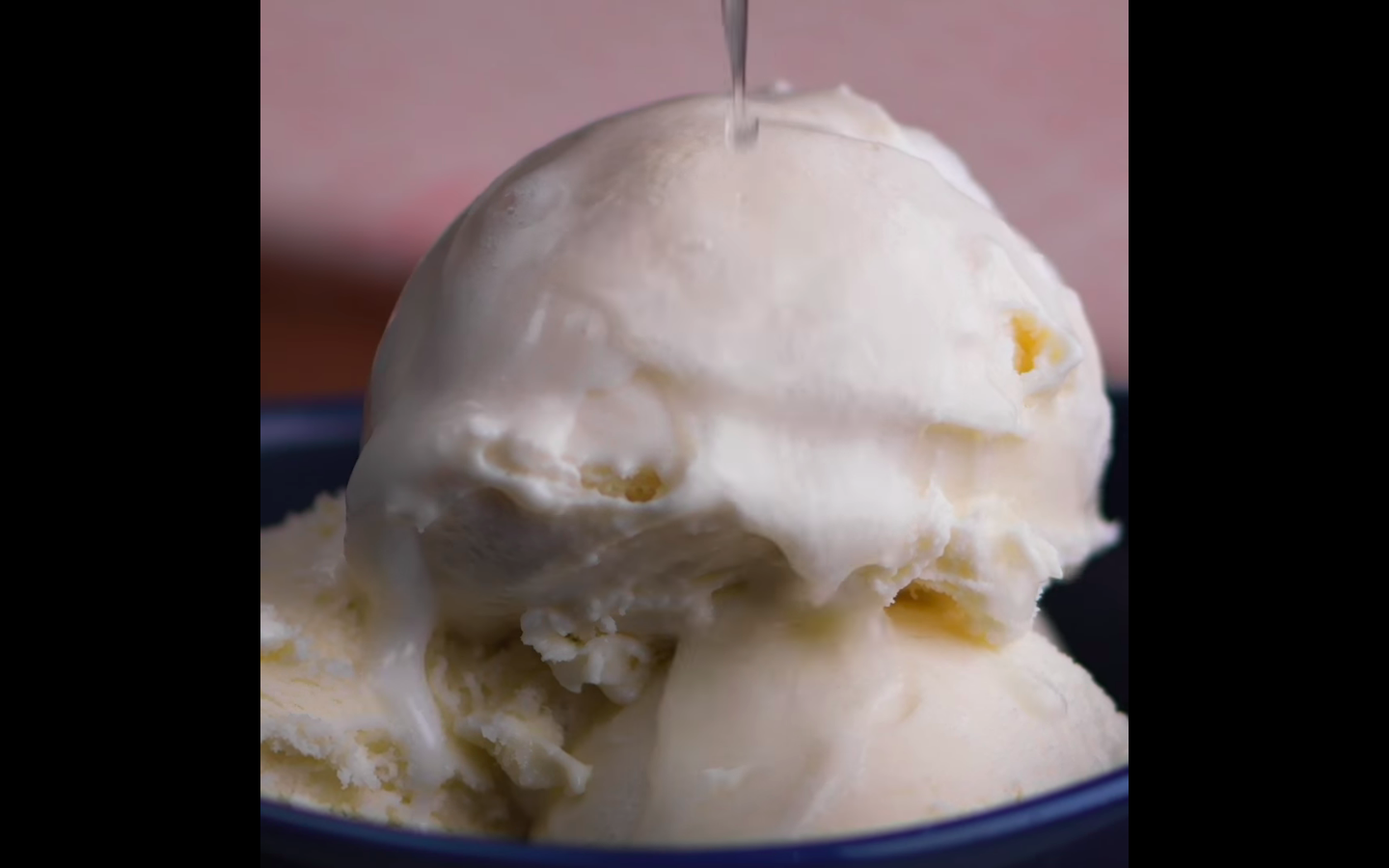
As evidence in relation to this section of the video, First Media sent Snopes a link to a 2018 post on a relatively obscure Indian blog which claimed that ice cream is sometimes adulterated with “Detergents or washing powder to improve smoothness and induce frothing thereby adding to the volume.”
The warning appears to have originated with speeches and checklists prepared in 2012 and 2013 by Sitaram Dixit, then chairman of a non-profit organization called the Consumer Guidance Society of India. In a 2013 document, Dixit outlined two tests for determining the presence of washing powder in ice cream:
“1. Put some lemon juice [in the ice cream], bubbles are observed if washing powder is present.
2. Add 1 ml of Hydrochloric acid (HCl) to a little of [sic] Sugar. If you observe effervescence, then washing powder is present.”
Despite this warning, no evidence exists of a pattern of behavior whereby retailers or manufacturers do, in fact, add washing powder or detergent to ice cream in order to add to its frothiness. We found no specific reports of any such incidents, either from India or elsewhere. In the context of the United States, we checked the FDA database of product-complaint reports from 2004 to 2018, and found not a single report of washing powder or detergent having been added to ice cream, or any other food or beverage product.
First Media’s video might well show lemon juice being added to a mixture of ice cream and washing powder. (The company again refused to say where they obtained the ice cream shown in the video and whether they had added anything to it before filming.) However, the underlying premise of this experiment — that manufacturers or retailers do, in fact, add washing powder to ice cream “for shine and lightness” — is false.
Most of the remaining 10 claims can be traced back to guidelines published in 2015 by the Food Safety and Standards Authority of India (FSSAI), a legitimate statutory agency operating under the aegis of India’s Ministry of Health and Family Welfare and the Indian government. Food adulteration is a serious and widespread problem in India, to an extent that is not replicated in the United States and many other developed countries. Some of the remaining tests in the Blossom video were based on scientifically valid experiments, but they had to do with types of food and drink adulteration that either simply do not occur, or are not prevalent in the United States and many other countries. Although Blossom has an international audience, the brand served its viewers — particularly those living outside India — poorly by failing to mention any of that crucial context.
7. Milk is adulterated with rice water, but will turn blue in the presence of seaweed: MIXTURE
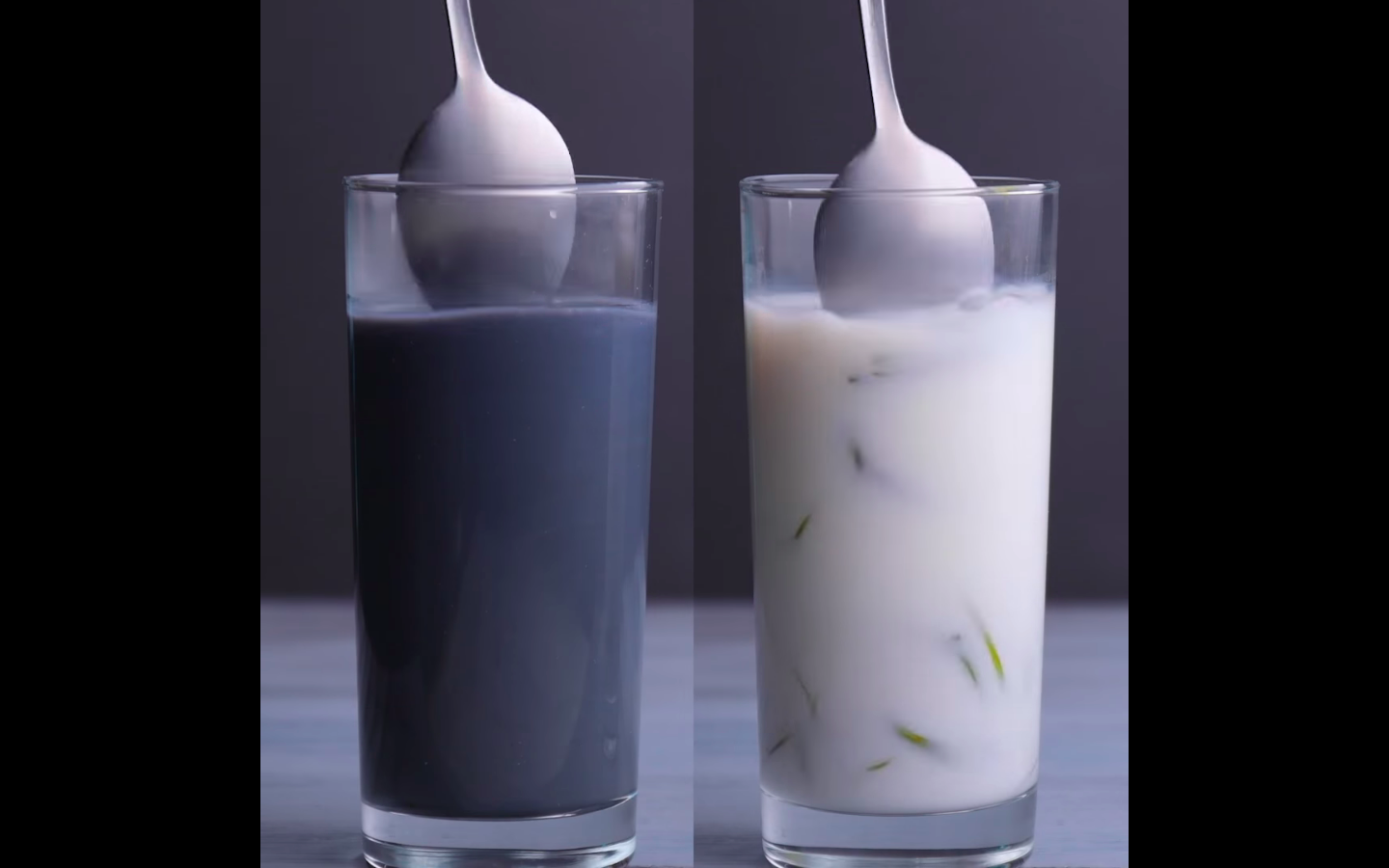
This test can be traced to the FSSAI guidelines, known as “Detect Adulteration with Rapid Test” (DART), which set out the following method:
“Boil 2-3 ml of sample with 5ml of water. Cool and add 2-3 drops of tincture of iodine. Formation of blue colour indicates the presence of starch. (In the case of milk, addition of water and boiling is not required)”.
As First Media explained to us by email, they used seaweed in their test because it is a good source of iodine. We haven’t been able to verify the iodine content of the particular seaweed they used, nor the composition of the milk samples featured in the videos. (The company refused to say where they obtained the milk or whether they added anything to it before filming, and they declined to answer a question about the prevalence of starch adulteration of milk in the United States.) However, the test is at least based on an FSSAI experiment that is scientifically legitimate, as confirmed by Decker.
Nonetheless, it is a test that addresses a type of adulteration (starch in milk) that is not prevalent in the United States and many other developed countries. By failing to provide that crucial context, this section of the video presented a highly misleading impression to tens of millions of viewers.
8. “Old produce is often dyed to make it look fresh” (and rubbing it with oil and water will reveal the deception): MIXTURE
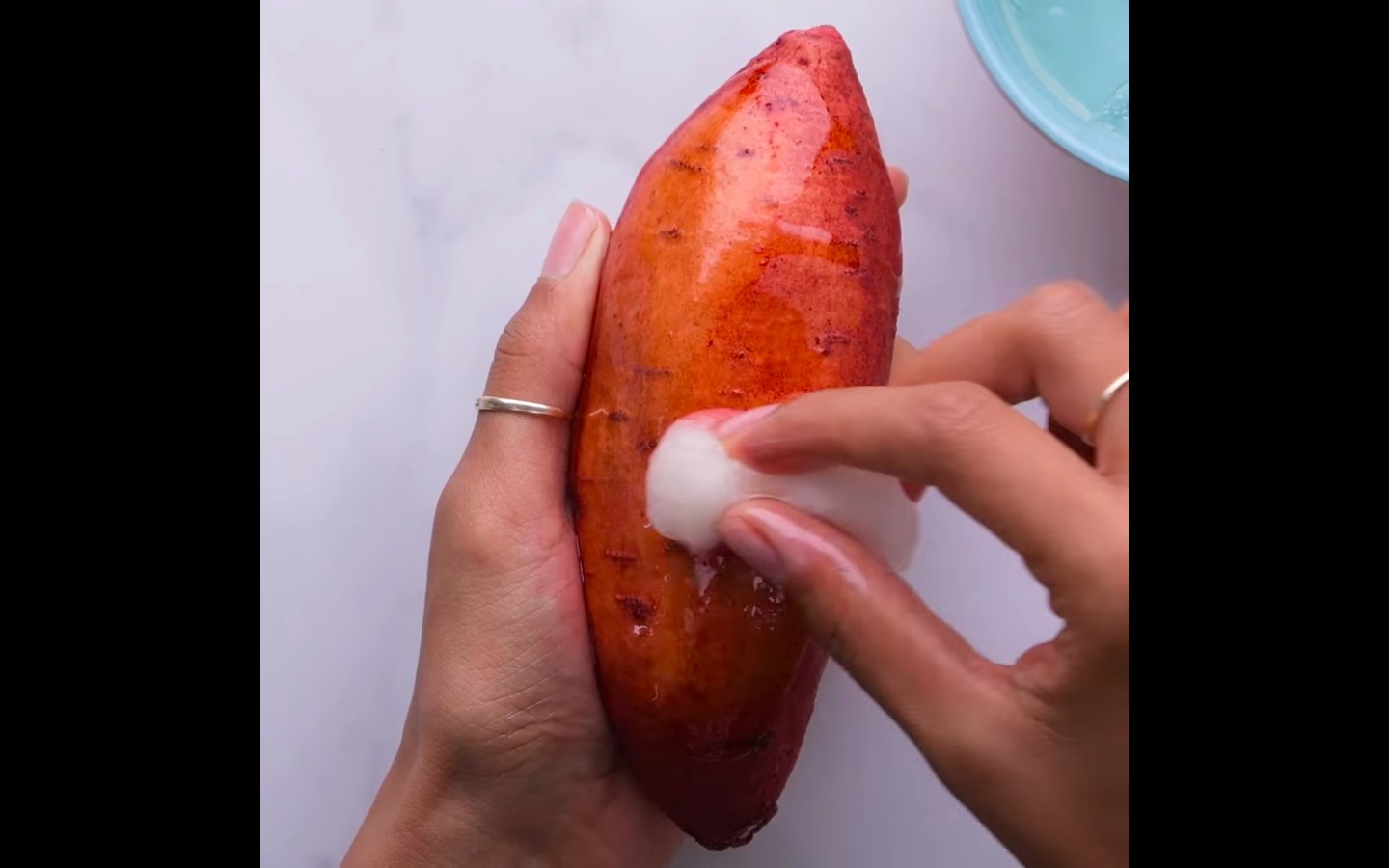
This test also originates in the FSSAI guidelines, which set out the following method:
“Take a cotton ball soaked in water or vegetable oil. (conduct the test separately). Rub the outer red surface of the sweet potato. If cotton absorbs colour, then it indicates the usage of rhodamine B for colouring the outer surface of sweet potato.”
Clearly, food products in India feature color additives such as rhodamine B to an extent or frequency that warrants the intervention of the FSSAI. However, the same is not true in the United States. Since 1983, the FDA has banned the two types of rhodamine B for use in drugs and cosmetics due to their carcinogenic properties. Since rhodamine B is not affirmatively listed as safe for use in food, it is therefore also effectively banned for use in food. For that reason, food manufacturers — subject to FDA inspections and fearful of punishment for violating food safety regulations — don’t use rhodamine B. In rare cases when they do, the FDA takes action against them. In light of these facts, it’s not clear where or how First Media obtained the sweet potato shown in the video, or whether they added anything to it before filming.
9. “Coffee with additives floats, pure coffee sinks”: UNPROVEN
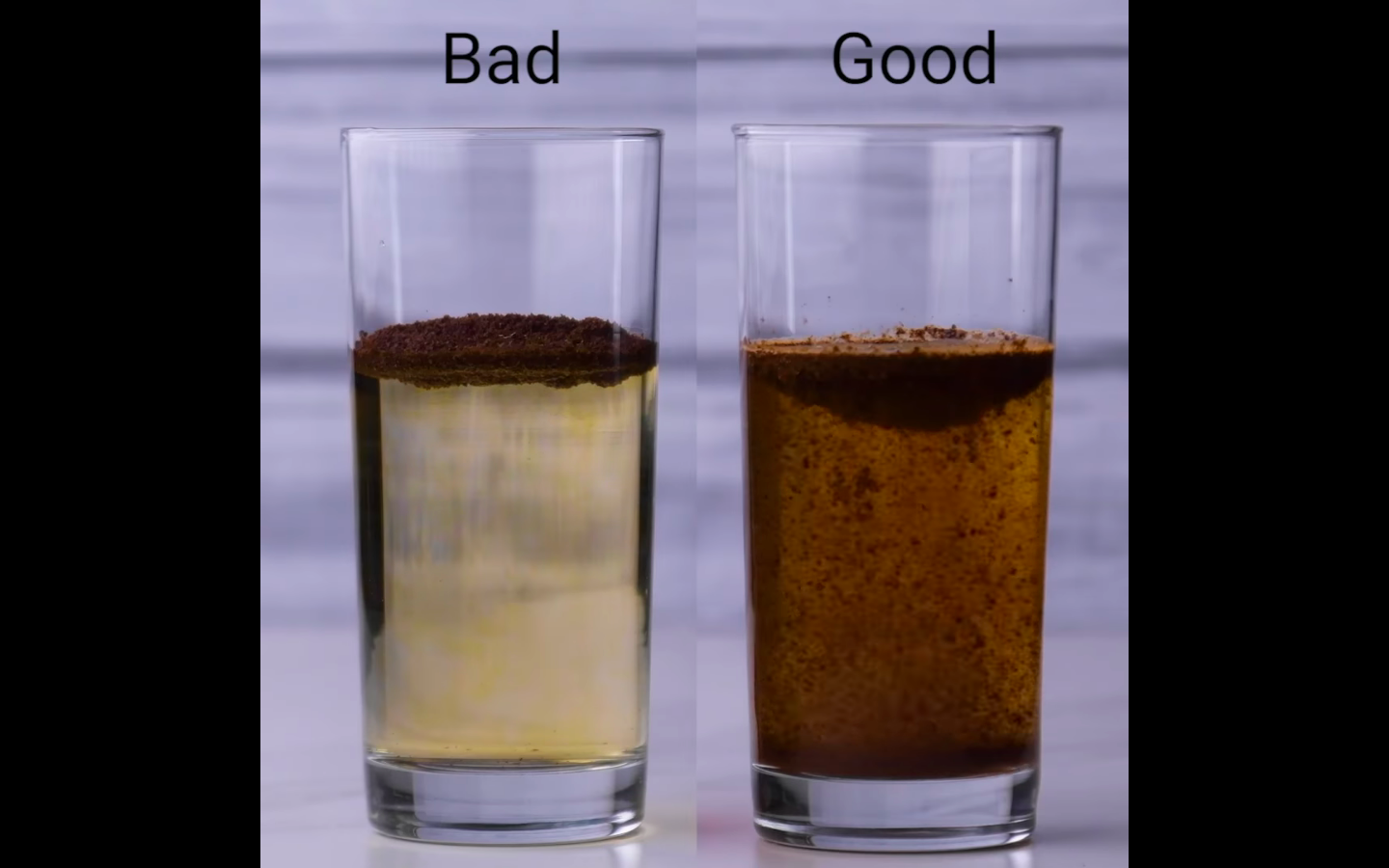
This test can also ultimately be traced back to the FSSAI guidelines, but those guidelines set out methods to test for the presence of two specific substances apparently used in India to adulterate coffee: clay and chicory powder. In testing for clay, the FSSAI advised, “Add ½ teaspoon of coffee powder in a transparent glass of water. Stir for a minute and keep it aside for 5 minutes. Observe the glass at the bottom. Pure coffee powder will not leave any clay particles at the bottom. If coffee powder is adulterated, clay particles will settle at the bottom.”
In the illustration used to demonstrate the clay test, the unadulterated coffee floats on the surface of the glass of water, something Blossom claimed was characteristic of adulterated coffee:
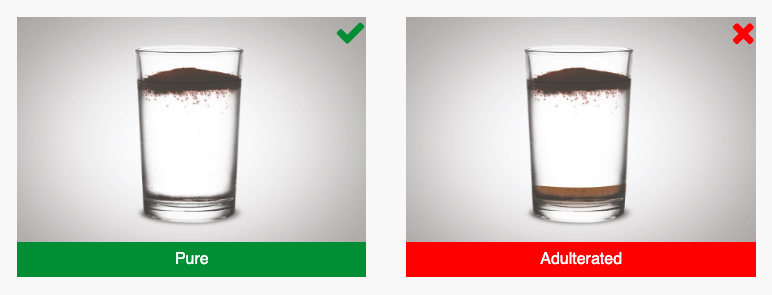
In testing for the presence of chicory powder, the FSSAI guidelines advised: “Take a transparent glass of water. Add a teaspoon of coffee powder. Coffee powder floats over the water but chicory begins to sink.”
Here once again, the illustration shows pure coffee as floating on the surface of the water, while the chicory-adulterated coffee sinks. This is the opposite of what Blossom’s video claimed when it stated “pure coffee sinks.” For these reasons, among others, this particular test should not be considered reliable.
We asked First Media to specify the kinds of additives that were tested in its video, but we did not receive a response to that particular question.
10. Fake salt contains chalk and turns water cloudy: MIXTURE
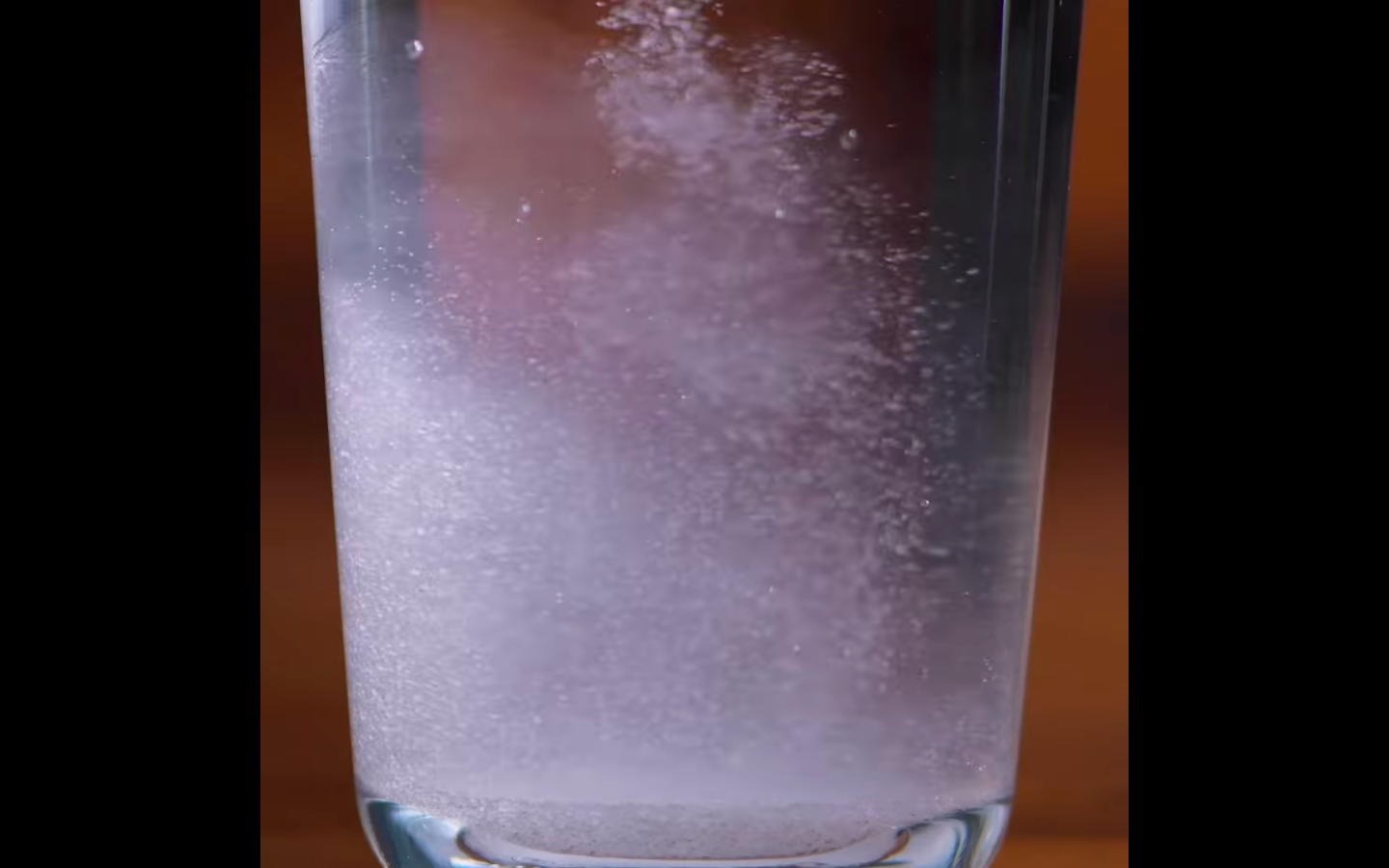
Again, the practice of adulterating salt with chalk is one primarily seen in India. We could find no evidence of such a practice in the United States. As such, the “chalk in salt” test derives from the FSSAI guidelines, which outline the following advice:
“Stir a spoonful of sample of salt in a glass of water. The presence of chalk will make [the] solution white and other insoluble impurities will settle down.”
11. “Old split peas are coated in green dye to disguise them”: MIXTURE

It’s not clear how widespread the practice of adding green coloring to split peas is, but it has featured in unconfirmed news reports emanating from China and India, and it has also been the subject of viral hoaxes in India. It appears to be prevalent enough in India that the FSSAI included it in some guidelines, advising: “Detection of artificial colour on green peas: Take little amount of green peas in a transparent glass. Add water to it and mix well. Let it stand for half an hour. Clear separation of colour in water indicates adulteration.”
However, no evidence shows that the practice is prevalent in the United States or other developed countries. Furthermore, it’s not clear that Blossom’s video actually shows green dye being removed from split peas, as opposed to the process of chlorophyll degradation, which occurs naturally when green split peas are exposed to the heat of boiling water.
12. “Pure spices burn and ignite, impure spices don’t”: UNPROVEN
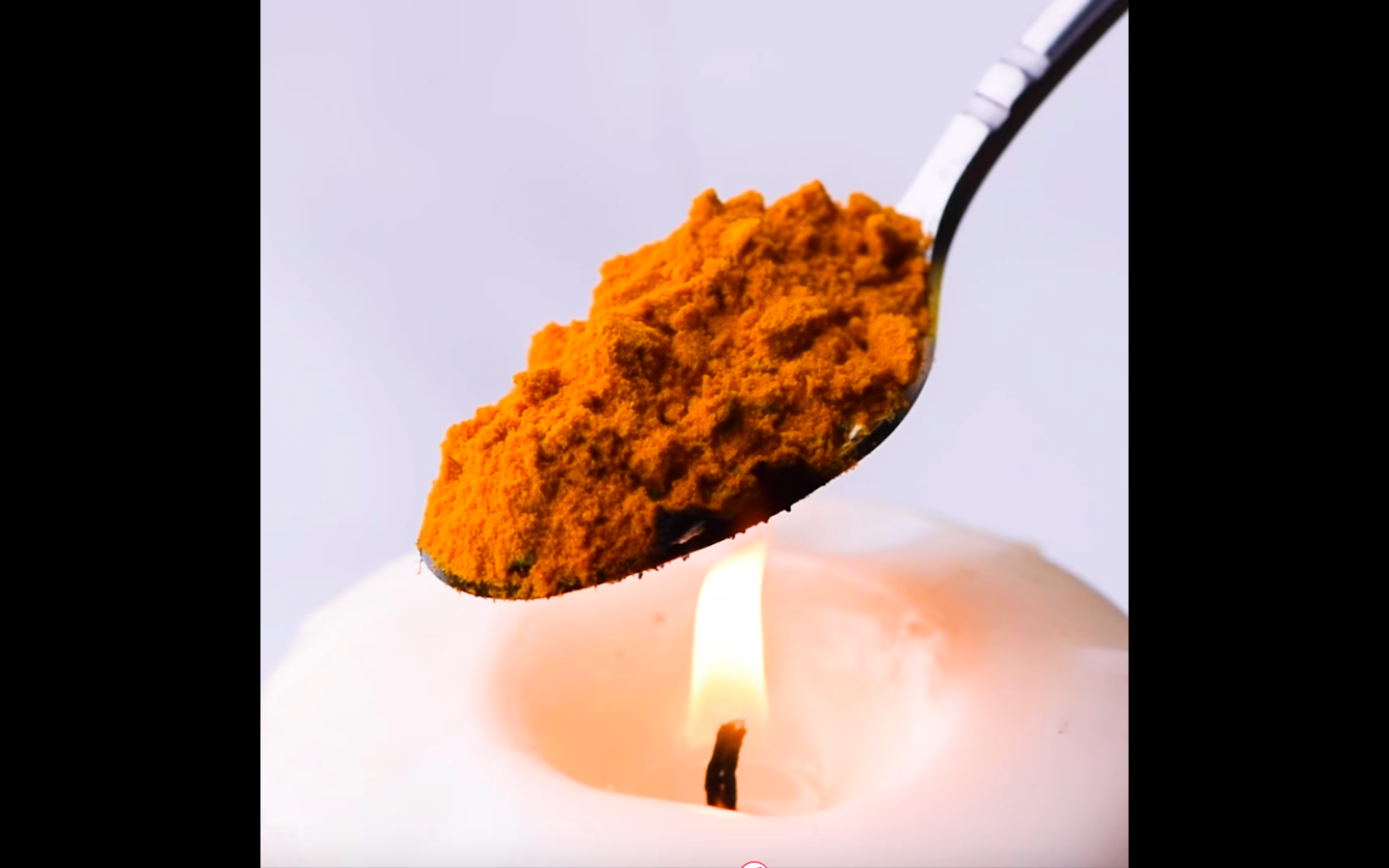
This claim too can be traced back to the FSSAI guidelines, but those guidelines specifically related to asafoetida, a gum that is used widely in Indian cuisine. By contrast, the Blossom video referred only to “spices,” and showed a spoonful of turmeric.
The FSSAI guidelines advised: “Detection of foreign resin in asafoetida: Burn small quantity of asafoetida in a stainless steel spoon. Pure asafoetida will burn like camphor [a flammable wax]. Adulterated asafoetida will not produce bright flame like camphor.”
While asafoetida adulteration might well be prevalent in India, and lighting a flame under a spoonful of it might indeed be a scientifically valid means of determining whether the asafoetida contains adulterants, it simply cannot be assumed that the same test works for other spices. As Decker observed: “Trying to extend that test to turmeric isn’t necessarily accurate, because those two spices have very different compositions.”
We asked First Media for a list of spices to which the “flame” test applied, but we did not receive a response to that question.
13. Some honey is diluted with water and diluted honey extinguishes a flame in a candle wick: MOSTLY TRUE
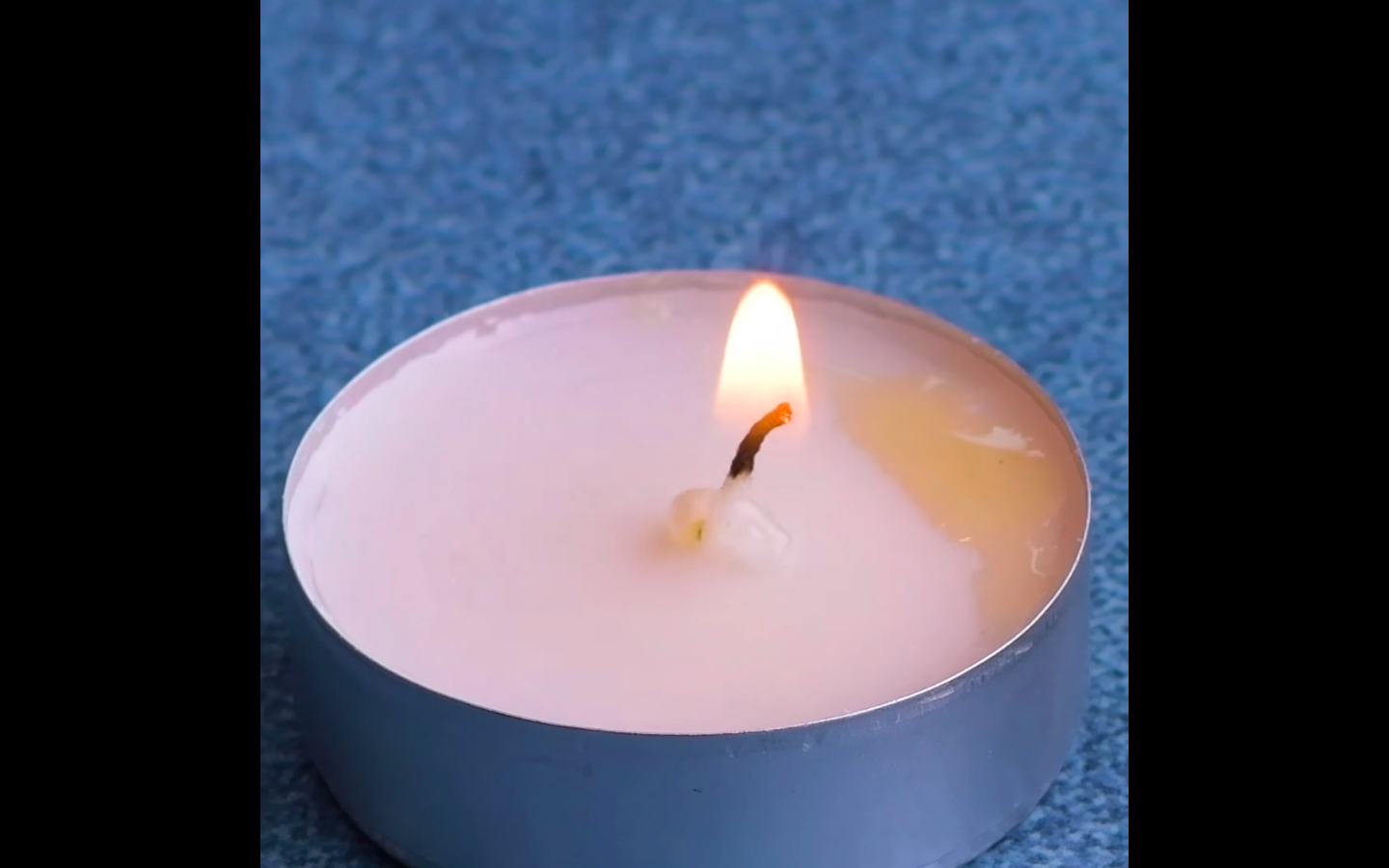
This test also originates in the FSSAI guidelines, which state: “Take a cotton wick dipped in a pure honey and light with a match stick. Pure honey will burn. If adulterated, the presence of water will not allow the honey to burn. If it does, it will produce a cracking sound.”
The FSSAI test appears to be valid, and appears to have been replicated by the makers of the video. However, it’s worth noting that in the context of the United States, the primary way in which honey is adulterated is by being mixed with corn syrup or cane sugar, not by being diluted with water. In light of that fact, it’s not clear where First Media obtained diluted honey, or whether they themselves added water to pure honey before filming.
14. “Pure tea doesn’t stain, impure tea stains instantly”: MIXTURE

Black teas get their characteristic dark colors from the tannins they contain. As such, even unadulterated tea might leave a stain, as anyone who has dropped a tea bag on to a garment or piece of paper can attest.
However, the FSSAI guidelines do contain a test that is designed to determine not just whether a tea is “impure,” as the video ambiguously claims, but specifically whether old tea leaves have been artificially colored with coal-tar dye: “Detection of exhausted tea in tea leaves: Take a filter paper and spread [a] few tea leaves. Sprinkle with water to wet the filter paper. Wash the filter paper under tap water and observe the stains against light. Pure tea leaves will not stain the filter paper. If coal tar is present, it will immediately stain the filter paper.”
We asked First Media to clarify what they meant by “impure” tea, but we did not receive a response to that question. As such, we cannot evaluate the validity or reliability of the test shown in the video.
15. ‘If butter contains oil, added sugar will turn pink’: UNPROVEN
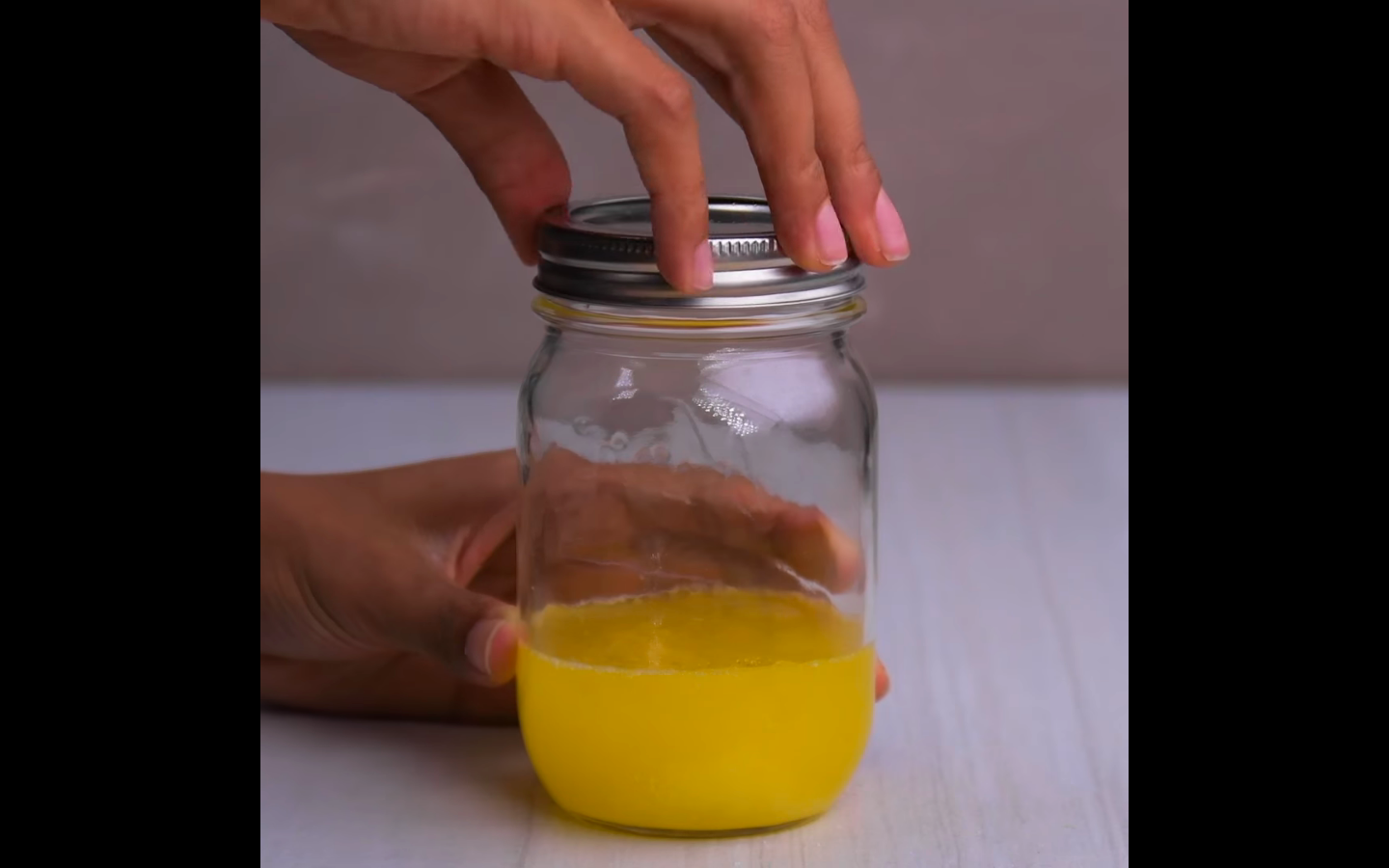
First Media cited a source that claimed: “Add a pinch of sugar to a teaspoon of melted ghee in a bottle. Shake well. Check it after 5 minutes, if you see the colour change to red, then it contains vegetable oil.”
That purported test can ultimately be traced back to a document published by Dixit, the former chairman of the Consumer Guidance Society of India, whose claims formed the basis of the “washing powder in ice cream” test above. Dixit outlined an experiment for determining the presence of vanaspati, a kind of vegetable shortening, in butter or ghee (clarified butter): “Take one teaspoonful of melted ghee or butter with equal quantity of Conc. Hydrochloric acid in a test tube. Add to it a pinch of cane sugar. Shake well for one minute and let it stand for five minutes. Crimson red colour in lower layer shows the presence of Vanaspati.”
First Media’s video claimed only that the presence of “oil” (presumed to be vegetable oil) would cause sugar to turn pink in butter. However, the source the company cited and the original source both claimed the sugar would turn red, not pink, and the original source said the sugar would turn “crimson red,” and only after the inclusion of concentrated hydrochloric acid in the mixture.
Without any further details about the precise ingredients and process employed by First Media (which the company failed to provide), and in light of these discrepancies, we can’t draw any definitive conclusions about the validity of the test shown in the video.
16. Some fresh produce is coated in wax, and warm water removes the wax: TRUE
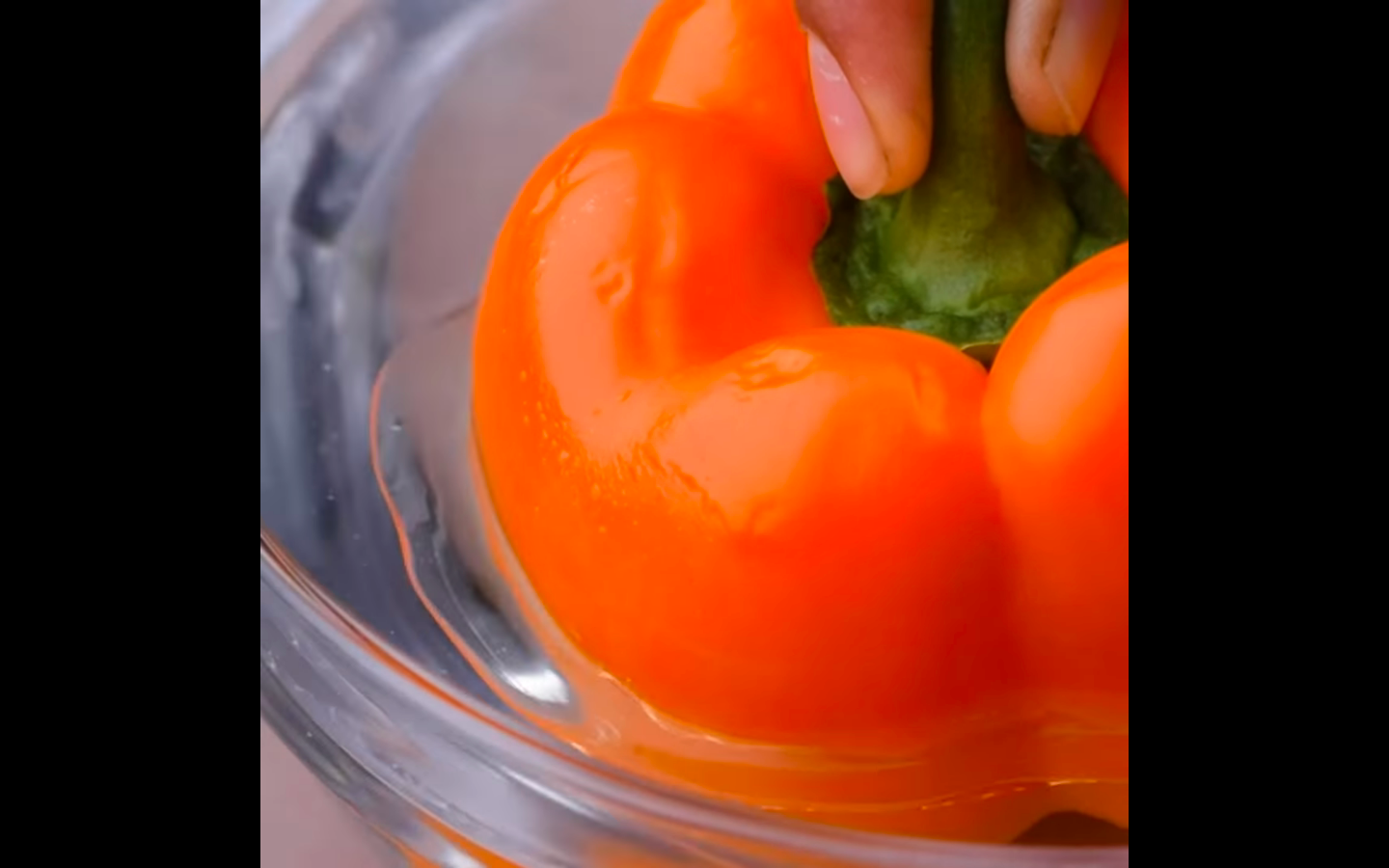
This is the only clearly accurate claim in the video. We can’t say for certain that what is shown in the video is indeed wax being removed from a bell pepper by warm water, but there’s no doubt that producers and retailers do sometimes apply wax coatings to fruit and vegetables, as Decker outlined: “That’s common. Vegetables are waxed a lot. The main purposes of waxing the vegetable, one of them is to give it that shiny appearance, but the other one is to prevent moisture loss.”
So the application of a thin coating of wax is a real phenomenon, as the video states, but this doesn’t indicate that the food is “fake” — rather, it’s a safe, FDA-approved way to help the produce look shinier and last longer. As Decker observed: “All these waxes are edible, anyway. They’re approved food additives.”
In summary, this particular section of the video is actually accurate, but it shouldn’t be a cause of too much concern for consumers.
